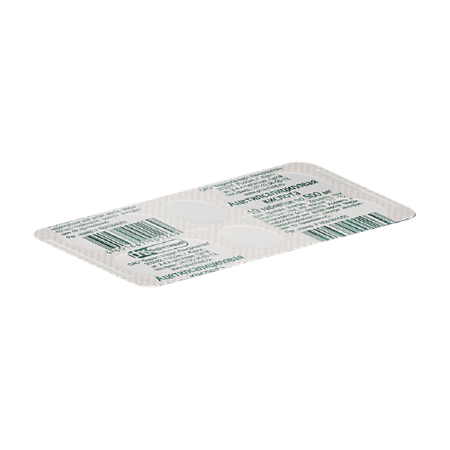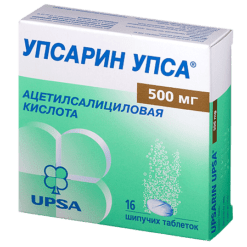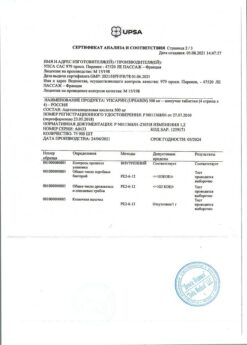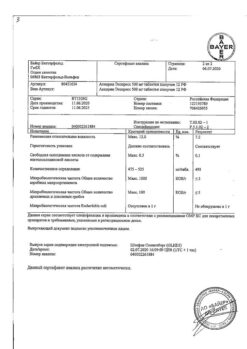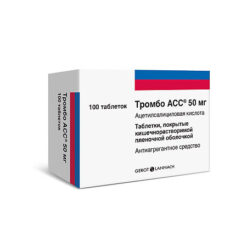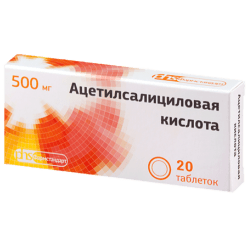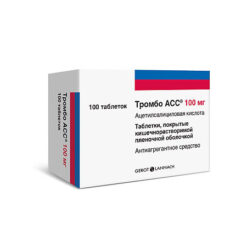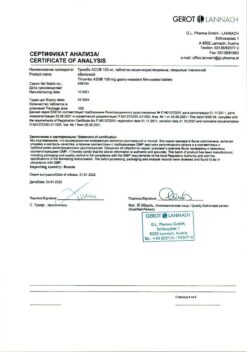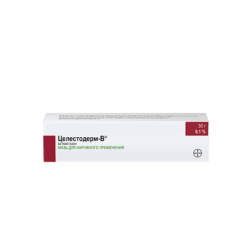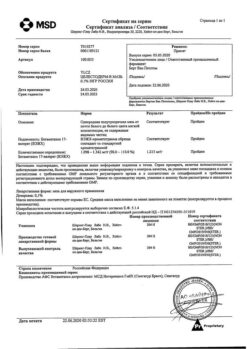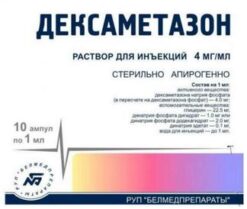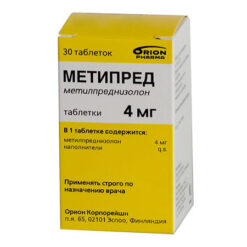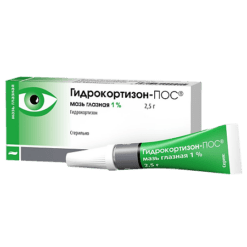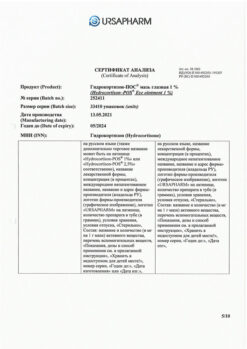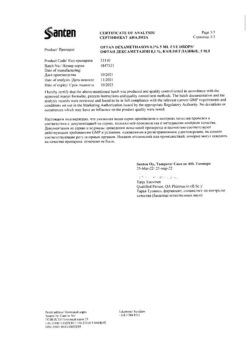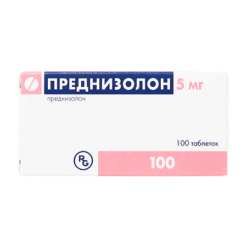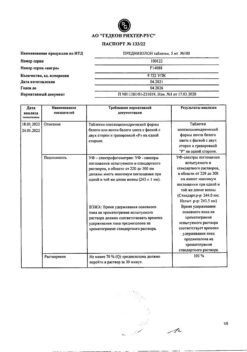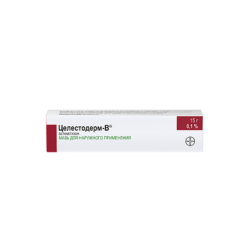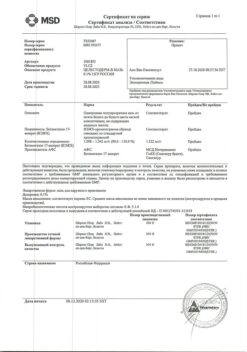No products in the cart.
Acetylsalicylic acid, tablets 500 mg 10 pcs
€0.32 €0.29
Description
The drug has analgesic, antipyretic and anti-inflammatory effects.
The mechanism of action of acetylsalicylic acid is based on inhibition of activity of COX-1 and COX-2 cyclooxygenase enzymes, involved in the synthesis of prostaglandins, prostacyclins and thromboxane. As the result the synthesis of prostaglandins providing formation of edema and hyperalgesia is disturbed.
The decrease of prostaglandins (mainly E1) in the thermoregulation center leads to decrease of the body temperature due to expansion of the skin vessels and increased sweating processes.
The analgesic effect is due to both central (influence on the centers of pain sensitivity) and peripheral (reduction of bradykinin algogenic activity) action.
The anti-inflammatory activity of the preparation is caused by decrease of prostaglandins synthesis, capillaries permeability reduction, decrease of hyaluronidase activity and limitation of energy supply of inflammatory process by inhibition of adenosine triphosphoric acid formation.
Decreases aggregation and adhesion of platelets and inhibits the process of thrombosis by inhibiting the synthesis of thromboxane A2 in platelets.
Blockade of COX-1 in gastric mucosa leads to inhibition of synthesis of gastro-protective prostaglandins, which may contribute to gastric mucosa ulceration and subsequent bleeding.
Indications
Indications
Symptomatic treatment of pain syndrome
Headache – symptomatic treatment
Toothache – symptomatic treatment
Migraine pain – symptomatic treatment
Sore throat – symptomatic treatment
Back and muscle pain – symptomatic treatment
Pain during menstruation – symptomatic treatment
Joint pain – symptomatic treatment
Increased body temperature due to colds and other infectious and inflammatory diseases (in adults and children over 15 years of age)
Pharmacological effect
Pharmacological effect
The drug has analgesic, antipyretic and anti-inflammatory effects.
The mechanism of action of acetylsalicylic acid is based on inhibition of the activity of the cyclooxygenase enzymes COX-1 and COX-2, which are involved in the synthesis of prostaglandins, prostacyclins and thromboxane. As a result, the synthesis of prostaglandins, which ensures the formation of edema and hyperalgesia, is disrupted.
A decrease in the content of prostaglandins (mainly E1) in the thermoregulation center leads to a decrease in body temperature due to dilation of skin vessels and increased sweating processes.
The analgesic effect is due to both central (influence on the centers of pain sensitivity) and peripheral (decreasing the algogenic activity of bradykinin) action.
The anti-inflammatory effect of the drug is due to a decrease in the synthesis of prostaglandins, a decrease in capillary permeability, a decrease in hyaluronidase activity, and a limitation of the energy supply to the inflammatory process by inhibiting the formation of adenosine triphosphoric acid.
Reduces platelet aggregation and adhesion and inhibits thrombus formation by suppressing the synthesis of thromboxane A2 in platelets.
Blockade of COX-1 in the gastric mucosa leads to inhibition of the synthesis of gastroprotective prostaglandins, which can contribute to ulceration of the gastric mucosa and subsequent bleeding.
Special instructions
Special instructions
Acetylsalicylic acid may cause bronchospasm, an attack of bronchial asthma or other hypersensitivity reactions. Risk factors are the presence of bronchial asthma, nasal polyps, fever, chronic bronchopulmonary diseases, a history of allergies (allergic rhinitis, skin rashes).
Acetylsalicylic acid may increase the tendency to bleeding, which is associated with its inhibitory effect on platelet aggregation. This should be taken into account when surgical interventions are necessary, including minor interventions such as tooth extraction. Before surgery, to reduce bleeding during surgery and in the postoperative period, you should stop taking the drug 5-7 days in advance and notify the doctor.
Children with acute viral infections should not be prescribed medications containing acetylsalicylic acid, since in the case of a viral infection the risk of Reye’s syndrome increases. Symptoms of Reye’s syndrome are prolonged vomiting, acute encephalopathy, and liver enlargement.
If it is necessary to use the drug during lactation, breastfeeding should be discontinued.
Acetylsalicylic acid reduces the excretion of uric acid from the body, which can cause an acute attack of gout in predisposed patients. There was no effect of taking the drug on driving a vehicle or other mechanisms.
During the treatment period, you should refrain from taking ethanol.
Impact on the ability to drive vehicles and machinery
During the treatment period, care must be taken when driving vehicles and engaging in potentially hazardous activities that require increased concentration and psychomotor reactions, since the use of acetylsalicylic acid can in rare cases cause dizziness.
Active ingredient
Active ingredient
Acetylsalicylic acid
Composition
Composition
Active substance:
acetylsalicylic acid – 500 mg.
Excipients:
potato starch – 72.1 mg,
citric acid – 0.2 mg,
stearic acid – 6.0 mg,
talc – 12.7 mg,
colloidal silicon dioxide (Aerosil) – 3.0 mg,
sodium carboxymethyl starch (sodium starch glycolate, Primogel) – 6.0 mg.
Contraindications
Contraindications
– hypersensitivity to acetylsalicylic acid and other non-steroidal anti-inflammatory drugs or other components of the drug;
– erosive and ulcerative lesions of the gastrointestinal tract (in the acute phase), gastrointestinal bleeding;
– bronchial asthma induced by taking salicylates and non-steroidal anti-inflammatory drugs;
– hemorrhagic diathesis;
– combined use of methotrexate at a dose of 15 mg per week or more;
– pregnancy, breastfeeding period;
– a combination of bronchial asthma, recurrent polyposis of the nose and paranasal sinuses and intolerance to acetylsalicylic acid;
– children under 12 years of age (for this dosage form).
The drug is not prescribed to children under 15 years of age with acute respiratory diseases caused by viral infections due to the risk of developing Reye’s syndrome (encephalopathy and acute fatty liver degeneration with acute development of liver failure).
With caution – with concomitant therapy with anticoagulants, gout, gastric ulcer and/or duodenal ulcer (history), including chronic or recurrent peptic ulcer, or episodes of gastrointestinal bleeding; renal and/or liver failure, glucose-6-phosphate dehydrogenase deficiency; hyperuricemia, bronchial asthma, chronic obstructive pulmonary disease, hay fever, nasal polyposis, drug allergies, concomitant use of methotrexate at a dose of less than 15 mg/week, pregnancy.
Side Effects
Side Effects
From the gastrointestinal tract: loss of appetite, diarrhea, abdominal pain, heartburn, nausea, vomiting, obvious (vomiting with blood, tarry stools) or hidden signs of gastrointestinal bleeding, which can lead to iron deficiency anemia, erosive and ulcerative lesions (including perforation) of the gastrointestinal tract, isolated cases – liver dysfunction (increased liver transaminases).
From the central nervous system: dizziness, tinnitus (usually signs of overdose).
From the hematopoietic system: increased risk of bleeding, which is a consequence of the effect of acetylsalicylic acid on platelet aggregation, thrombocytopenia, anemia, leukopenia.
Allergic reactions: skin rash, anaphylactic reactions, bronchospasm, Quincke’s edema.
From the genitourinary system: impaired renal function.
Others: when taken as an antipyretic – Reye’s syndrome (encephalopathy and acute fatty liver with rapid development of liver failure).
Interaction
Interaction
Combined use:
– with methotrexate at a dose of 15 mg per week or more: the hemolytic cytotoxicity of methotrexate increases (renal clearance of methotrexate decreases and methotrexate is replaced by salicylates in connection with blood plasma proteins);
– with indirect anticoagulants and heparin: the risk of bleeding increases due to inhibition of platelet function, damage to the mucous membrane of the gastrointestinal tract, displacement of anticoagulants (oral) from connection with blood plasma proteins;
– with other non-steroidal anti-inflammatory drugs: as a result of synergistic interaction, the risk of ulcers and gastric bleeding increases;
– with uricosuric drugs, for example, benzbromarone: reduces the uricosuric effect;
– with digoxin: digoxin concentration increases due to decreased renal excretion;
– enhances the effects of oral hypoglycemic drugs;
– with thrombolytic drugs: the risk of bleeding increases;
– with systemic glucocorticosteroids, excluding hydrocortisone, used as replacement therapy for Addison’s disease: when using glucocorticosteroids, the level of salicylates in the blood decreases due to increased excretion of the latter;
– with angiotensin-converting enzyme inhibitors: glomerular filtration is reduced due to inhibition of prostaglandins and, as a result, the antihypertensive effect is reduced;
– with valproic acid: the toxicity of valproic acid increases;
– with ethanol (alcoholic drinks): the risk of damaging the gastrointestinal mucosa increases and the risk of bleeding in the gastrointestinal tract increases;
– enhances the effects of narcotic analgesics, thrombolytics and platelet aggregation inhibitors, sulfonamides (including co-trimoxazole);
– increases the concentration of barbiturates and lithium salts in plasma;
– antacids containing magnesium and/or aluminum slow down and impair the absorption of acetylsalicylic acid;
– myelotoxic drugs increase the manifestations of hematotoxicity of the drug;
– enhances the effects of triiodothyronine;
– reduces the effect of antihypertensive drugs, diuretics (spironolactone, furosemide).
Glucocorticoids, ethanol and ethanol-containing drugs increase the damaging effect of acetylsalicylic acid on the mucous membrane of the gastrointestinal tract and increase the risk of gastrointestinal bleeding.
Overdose
Overdose
Symptoms
Moderate overdose: nausea, vomiting, tinnitus, hearing loss, headache, dizziness and confusion.
Severe overdose: fever, hyperventilation, ketoacidosis, respiratory alkalosis, metabolic acidosis, coma, cardiogenic shock, respiratory failure, severe hypoglycemia.
Treatment: hospitalization, gastric lavage, activated charcoal, monitoring of acid-base balance, alkaline diuresis in order to obtain a urine pH between 7.5-8 (forced alkalinization of urine is considered achieved if the concentration of salicylate in the blood plasma is more than 500 mg/l (3.6 mmol/l) in adults or 300 mg/l (2.2 mmol/l) in children), hemodialysis, replacement of fluid loss, symptomatic therapy.
Storage conditions
Storage conditions
In a dry place, at a temperature not exceeding 25 °C.
Keep out of the reach of children.
Shelf life
Shelf life
4 years
Manufacturer
Manufacturer
Pharmstandard-Leksredstva, Russia
Additional information
| Shelf life | 4 years |
|---|---|
| Conditions of storage | In a dry place at a temperature not exceeding 25 °C. Keep out of reach of children. |
| Manufacturer | Pharmstandard-Leksredstva, Russia |
| Medication form | pills |
| Brand | Pharmstandard-Leksredstva |
Other forms…
Related products
Buy Acetylsalicylic acid, tablets 500 mg 10 pcs with delivery to USA, UK, Europe and over 120 other countries.

